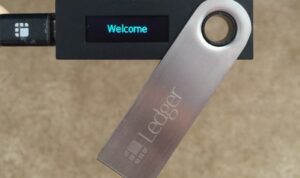Bitcoin wallets are the key to managing your digital currency. From different types to setting up and securing them, this guide covers it all in a cool and informative way that’ll keep you hooked.
Learn about hardware versus software wallets, how to create and protect your wallet, and the ins and outs of transacting with Bitcoin.
Types of Bitcoin Wallets

When it comes to Bitcoin wallets, there are several types to choose from. These include hardware wallets, software wallets, online wallets, and offline wallets. Each type offers different features and benefits to users.
Hardware Wallets vs. Software Wallets
Hardware wallets are physical devices that store your private keys offline, making them extremely secure against hacking and malware. They are ideal for long-term storage of large amounts of Bitcoin. On the other hand, software wallets are applications or programs that run on your computer or mobile device. They are convenient for everyday transactions but are more vulnerable to cyber attacks compared to hardware wallets.
Security Implications of Online vs. Offline Wallets
Online wallets, also known as web wallets, are accessible from any device with an internet connection. While they offer convenience, they are more susceptible to hacking and phishing attacks. Offline wallets, such as hardware wallets and paper wallets, are not connected to the internet, providing a higher level of security. Storing your Bitcoin offline reduces the risk of unauthorized access and theft.
Setting Up a Bitcoin Wallet
When it comes to setting up a Bitcoin wallet, it’s crucial to follow the right steps to ensure the security of your digital assets. Let’s walk through the process of creating a new Bitcoin wallet and the importance of securely storing your private keys.
Creating a New Bitcoin Wallet
To create a new Bitcoin wallet, follow these steps:
- Choose a reputable wallet provider or software that suits your needs.
- Download and install the wallet on your device.
- Follow the on-screen instructions to set up your wallet, which may include creating a strong password.
- Generate a new Bitcoin address within the wallet to receive funds.
- Backup your wallet’s recovery phrase or seed, which is crucial for restoring access to your funds in case of device loss or failure.
Importance of Securely Storing Private Keys
Private keys are the keys to your Bitcoin kingdom. Keep them safe!
Private keys are essentially the passwords to your Bitcoin wallet. It is vital to store them securely and never share them with anyone to prevent unauthorized access to your funds.
Backup Options for Bitcoin Wallets
When setting up a Bitcoin wallet, consider these backup options:
- Writing down your recovery phrase on a piece of paper and storing it in a secure location away from prying eyes.
- Using a hardware wallet to securely store your private keys offline, protecting them from potential online threats.
- Creating encrypted backups of your wallet on external storage devices like USB drives to ensure redundancy in case of data loss.
Remember, backups are not just a precaution but a necessary step to safeguard your Bitcoin holdings against unforeseen circumstances.
Security Measures for Bitcoin Wallets
When it comes to securing your Bitcoin wallet, there are a few key measures you should always keep in mind. With the rise of cyber threats and hacking attempts, protecting your digital assets is more important than ever. Let’s take a look at the best practices for ensuring the security of your Bitcoin wallet.
Hot Wallets vs Cold Wallets, Bitcoin wallets
Hot wallets and cold wallets are two popular types of Bitcoin wallets, each offering different levels of security. Hot wallets are connected to the internet, making them convenient for frequent transactions but also more susceptible to hacking. Cold wallets, on the other hand, are offline devices that are considered more secure since they are not connected to the internet. While hot wallets are great for everyday use, cold wallets are ideal for storing large amounts of Bitcoin for the long term.
Risks of Storing Large Amounts in a Single Wallet
Storing a large amount of Bitcoin in a single wallet can pose significant risks. If that wallet gets compromised, you could potentially lose all your funds in one go. It’s always recommended to diversify your holdings across multiple wallets to reduce the impact of any potential security breaches. By spreading your funds across different wallets, you can minimize the risk of losing everything in case of a security breach.
Transacting with Bitcoin Wallets

Bitcoin wallets play a crucial role in facilitating transactions on the blockchain, allowing users to send and receive Bitcoin securely. Let’s dive into how these transactions work and the fees involved.
Sending and Receiving Bitcoin
When sending Bitcoin using a wallet, you will need the recipient’s wallet address. This address is a unique string of characters that acts as the destination for the Bitcoin you’re sending. To send Bitcoin, you simply input the recipient’s address, specify the amount, and confirm the transaction. On the other hand, when receiving Bitcoin, you share your wallet address with the sender, who then initiates the transfer to your address.
Transaction Fees
Sending Bitcoin from a wallet typically incurs transaction fees. These fees are paid to miners who verify and process transactions on the blockchain. The amount of the fee can vary depending on network congestion and the speed at which you want the transaction to be processed. Higher fees often result in faster transaction confirmations, while lower fees may lead to longer processing times. It’s essential to consider these fees when sending Bitcoin to ensure timely and efficient transactions.





